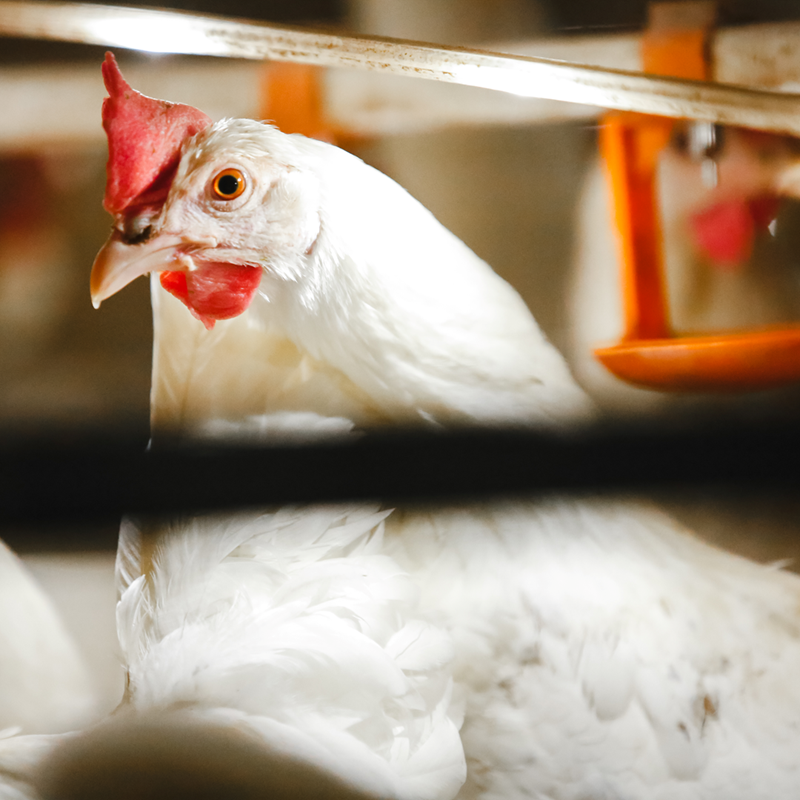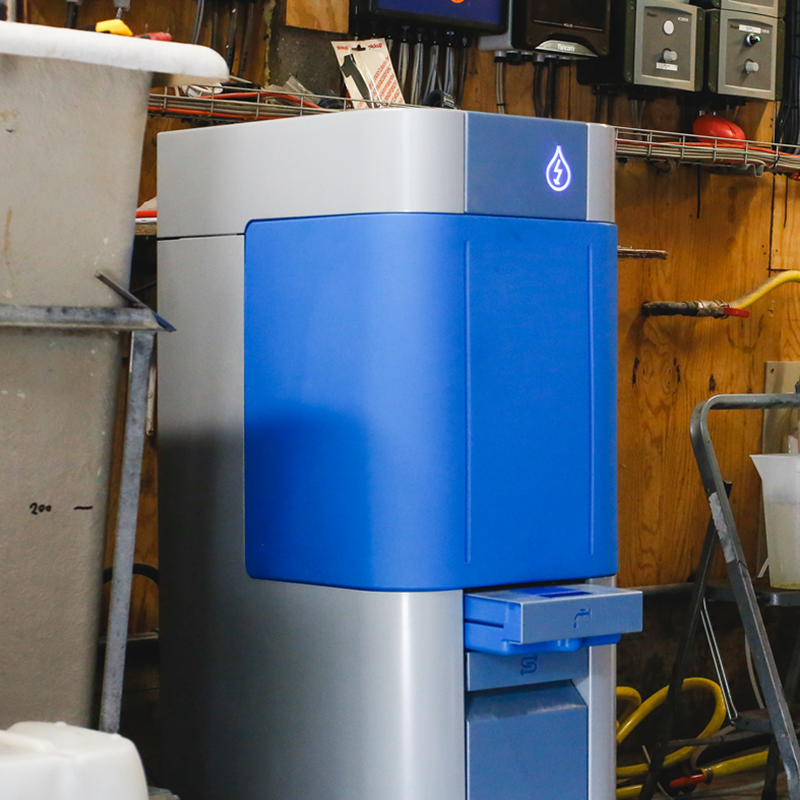Testimonial Gerard Den Boer
More than two decades ago, Gerard den Boer decided it was time for something new. After twenty years in crop protection, he wanted to change course. “I had studied livestock farming and had seen many livestock farms from the inside through temporary work, and it kept itching: working for a boss was not for me, I just wanted my own company.”
An unexpected start with laying hens
In 2003, he bought an existing company with a simple stable in Emmeloord. His original plan was to keep ducks. A niche market with potential. "But then bird flu threw a spanner in the works and I had to wait months for the ducks. And yes, the mortgage won't wait." Because laying hens were an option at that time, Gerard decided to start with them. "In the end, it didn't matter that much to me, but in retrospect I'm very happy with it. I started with 5,000 hens. I first had to make sure the company could run."

From 5,000 to 46,000 chickens
The company now has 46,000 laying hens with both free-range and barn chickens. His son also helps out in the company. No rapid growth, but a steady build-up. “You learn by doing,” says Den Boer. He continues: “During the temporary work I did in my younger years, I paid close attention to why one farmer made money and the other didn’t. My conclusion? The farmers who were on top of everything often did well. The farmers who were a bit easier often made less.”
Water quality: a frustrating challenge
This urge for control made him sink his teeth into the drinking water supply. The poultry farmer explains: “I have done well on bad water, and sometimes I have done badly on good water. But we all know that you cannot do well on bad water for a long time. In addition, I believe: if you can control it, you should control it.”
He had not yet had any major problems with animal health, but the water samples were regularly not in order — despite the use of hydrogen peroxide. “Then you think: I am doing everything as it should be, and yet it is still not good enough. That is frustrating.”
An advertisement that stuck
When Gerard saw an advertisement for the Watter system, he became interested. “The simplicity appealed to me: water, salt and electricity and no harmful chemicals.” The story of poultry farmer Wilco Atsma gave him the final push. “If it works for him, it should work here too, right?”
Trial period gave confidence
What convinced him was the possibility to use the system on a trial basis first. “I thought that was really strong. Because if it doesn’t work, you as a supplier will lose your customer and you will be responsible for the costs. That way you show that you stand behind your product.”
During the trial period, water samples were taken. These showed a clear and constant improvement in microbiological water quality. “Then I didn’t have to think twice: the water has never been so clean.”
|
Before installation |
After installation | |||
|
Drinking point |
Before |
After |
Before |
After |
|
kve/ml |
9000 |
8000 |
<100 kve/ml |
<100 kve/ml |
|
coli |
0 |
0 |
0 |
0 |
|
Yeasts and molds |
0 |
200 |
0 |
0 |

Certainty provides peace of mind
Since the installation, the system has been running silently in the background. “You mainly notice it because you no longer have any hassle with water. No changing water results, no worries. It is stable and good. And that is what you want as a poultry farmer.” The failure rate is also lower, but that of course depends on several factors, although the poultry farmer dares to say that microbiological water quality certainly plays a role in this.
What started as a practical choice has grown into a successful poultry farm. “I don't like golden stories,” says Gerard. “But Watter lives up to the expectations that were created in advance and that is exactly why I bought the system.”
Interested in a trial period?



